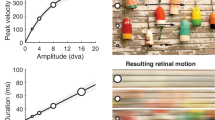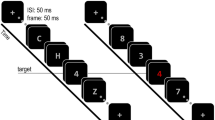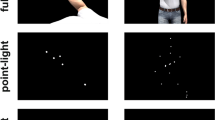Abstract
THE phenomenon referred to by Mr. Turner and by Prof. Boycott in NATURE of October 7 and 14, pp. 180 and 213, was described by Aristotle in his treatise on dreams (“Parva Naturalia”) thus: “Also, the senses are affected in this way when we turn quickly from; objects in motion, e.g. from looking at a river, and especially from looking at swiftly flowing streams. For objects at rest then seem to be in motion.”
This is a preview of subscription content, access via your institution
Access options
Subscribe to this journal
Receive 51 print issues and online access
$199.00 per year
only $3.90 per issue
Buy this article
- Purchase on SpringerLink
- Instant access to full article PDF
Prices may be subject to local taxes which are calculated during checkout
Similar content being viewed by others
Author information
Authors and Affiliations
Rights and permissions
About this article
Cite this article
WOHLGEMUTH, A. A Visual Illusion. Nature 106, 243 (1920). https://doi.org/10.1038/106243c0
Issue date:
DOI: https://doi.org/10.1038/106243c0



